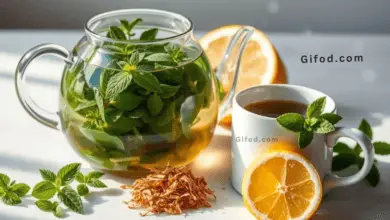Coarse Salt: Elevate Your Cooking with This Versatile Ingredient
What makes coarse salt a favorite in kitchens and dining tables around the world? Is it the bigger, chunkier crystals, or the special texture it adds to food? As I dive into the world of coarse salt, I’m eager to share its many benefits in cooking. It’s not just for flavor, but also for texture.

Coarse salt has bigger, irregular grains than fine-textured table salt. This gives you up to 30% more control when seasoning. It’s a must-have for both chefs and home cooks, helping them measure seasoning better. But what really makes coarse salt stand out is how it boosts flavor because it’s less processed than table salt.
Key Takeaways
- Coarse salt has larger, irregular grains that provide more control when seasoning
- It enhances flavor due to being less processed than table salt
- Coarse salt is often used as a finishing salt to enhance taste and texture
- It’s a popular choice for decorative purposes, used on 40% of all plated dishes in fine dining
- Individuals using coarse salt may consume up to 15% less sodium overall
- Coarse salt is essential for cooking, elevating culinary creations across multiple dish types
Understanding Coarse Salt and Its Unique Properties
Exploring the world of salts, I see that coarse salt is less processed than table salt. This results in a purer, more natural flavor. It’s perfect for adding elegance to dishes. Coarse salt, sea salt, and kosher salt are popular in cooking, each with its own unique qualities.
Coarse salt stands out due to its chemical makeup and crystal size. Its larger crystals are great for non-precise measurements. Sea salt flakes have the biggest crystals and are irregularly shaped. Kosher salt, with its large grains, is ideal for seasoning meats and poultry.
Choosing the right salt depends on the flavor and texture you desire. For instance, Maldon sea salt flakes have been a chef’s favorite for nearly 140 years. They offer a less bitter and less salty taste, perfect for adding a quick savory zing. Understanding the unique properties of coarse salt, sea salt, and kosher salt can take your cooking to new heights.
| Type of Salt | Crystal Size | Flavor Profile |
|---|---|---|
| Coarse Salt | Larger | Purer, more natural |
| Sea Salt Flakes | Largest | Less bitter, less salty |
| Kosher Salt | Large | Perfect for seasoning meats and poultry |
The Rich History of Culinary Salt Usage
Salt has been crucial in cooking for thousands of years. Its use dates back to ancient times. The history of salt production is filled with interesting stories, starting from 2700 B.C. This natural mineral adds flavor to food and helps preserve it, making food last longer.
In many cultures, salt was very valuable. It was even used as money. In ancient Rome, soldiers were paid with cooking salt. This is how the word “salary” came to be. Salt’s role in history is clear in its impact on trade and economies. Cities like Venice, Genoa, and Marseille got rich from salt trade.
Over time, the way we use salt has changed. We now have different types like table salt and seasoning salt. Today, we can find gourmet salts like sea salt and Himalayan pink salt. These are loved for their unique tastes and minerals.
Some interesting facts about salt include:
- Salt production has been recorded as far back as 2700 B.C.
- There are references to over 40 kinds of salt in the earliest known treatise on pharmacology from China.
- The first underground salt mine in the United States was initiated in 1869.
In conclusion, the history of salt in cooking is rich and interesting. Salt has played a big role in cultures, economies, and food around the world. Whether it’s cooking salt, table salt, or seasoning salt, it’s a key part of our daily lives.
Different Types of Coarse Salt in Modern Cooking
Exploring the world of coarse salt is exciting. We find different types that make our cooking better. From kosher salt to sea salt, each has its own special qualities.
In today’s cooking, we have many coarse salt choices. These include Himalayan salt and rock salt. They add flavor and elegance to our dishes. Whether you’re a pro chef or a home cook, knowing about these salts helps you pick the right one for your recipes.
Here’s a quick look at the different coarse salts:
- Kosher salt: known for its coarse granules and mild flavor
- Sea salt: often less processed than table salt, retaining natural mineral traces
- Himalayan salt: prized for its pink color and potential health benefits
- Rock salt: a type of salt that’s often used in cooking and preservation
Choosing the right coarse salt depends on the flavor and texture you want. With so many options, you can try different salts to find the best for your dishes.
| Salt Type | Characteristics | Uses |
|---|---|---|
| Kosher Salt | Coarse granules, mild flavor | Curing, cooking, seasoning |
| Sea Salt | Natural mineral traces, varied texture | Seasoning, cooking, preserving |
| Himalayan Salt | Pink color, potential health benefits | Cooking, seasoning, presentation |
| Rock Salt | Coarse texture, robust flavor | Cooking, preservation, curing |
Essential Tools and Equipment for Cooking with Coarse Salt
Cooking with coarse salt is better with the right tools. Using gourmet salt or seasoning salt can really boost your dish’s flavor. Here are some key tools to consider.
A salt mill or shaker is crucial. They let you sprinkle or grind your salt easily. Also, measuring cups and spoons are important for precise ingredient amounts, including cooking salt.
Don’t forget a chef’s knife, paring knife, and bread knife. They’re great for prep and adding seasoning salt. With these tools, your gourmet salt can make your cooking even better.
Other useful items include nesting prep bowls, a colander, and cooking utensils. These help with meal prep and cooking. They work well with cooking salt to make tasty dishes.
Mastering Basic Seasoning Techniques
Exploring cooking with coarse salt has shown me the value of basic seasoning techniques. The right amount of salt can transform any dish’s flavor. It’s key to know how to use coarse salt, cooking salt, and seasoning salt well.
Using a small amount of salt can greatly improve a dish’s taste. Salt is one of the four main seasoning types, along with pepper, sugar, and acids. Adding salt at the start and end of cooking helps balance flavors. For instance, Bolner’s Fiesta Brand Coarse Kosher Sea Salt enhances flavors due to its slow dissolution.
The Art of Salt Pinching
Salt pinching is a skill that takes time to master. It adds depth and complexity to dishes. Choosing the right salt, like coarse or kosher, is crucial for flavor. Here are some tips for perfecting salt pinching:
- Use the right type of salt for the dish
- Pinch the salt at the right time during cooking
- Adjust the amount of salt according to the recipe and personal taste
Timing Your Salt Application
Timing is key in salt application. Salt added at the start enhances flavors, while at the end, it adds a burst. Understanding when to add salt is crucial. Mastering seasoning techniques elevates my cooking, making dishes with coarse salt, cooking salt, and seasoning salt more delicious.
| Salt Type | Flavor Profile | Usage |
|---|---|---|
| Coarse Salt | Strong, savory | Seasoning meats, vegetables, and soups |
| Kosher Salt | Mild, slightly sweet | Seasoning meats, poultry, and fish |
| Sea Salt | Complex, mineral-rich | Adding texture and flavor to dishes |
Creative Ways to Use Coarse Salt in Your Kitchen
As a home cook, I love finding new uses for coarse salt. It’s great as a finishing touch or in sauces and marinades. I especially enjoy adding a pinch of gourmet salt to baked goods like bread and cookies. It boosts the flavor and texture.
Coarse salt also adds depth to many dishes. A sprinkle of sea salt can make a simple salad taste better. Meanwhile, a pinch of kosher salt can make a homemade sauce more sophisticated. Here are some more creative uses for coarse salt:
- Use coarse salt to clean and disinfect your fridge and other kitchen surfaces
- Add a handful of salt to a bucket of ice water to chill beverages quickly
- Use salt to rejuvenate sponges and prevent mold on cheese
- Make a DIY face scrub with salt and olive oil for skin exfoliation
Coarse salt is more than just a seasoning. It’s a versatile ingredient for both seasoned chefs and beginners. Trying different types like gourmet salt, sea salt, and kosher salt can make cooking more exciting.
Salt Curing and Preservation Methods
Salt curing is an old way to keep food fresh, and it’s still popular today. Using rock salt, Himalayan salt, or sea salt can make the food taste better and feel different. For example, rock salt’s coarse texture helps pull moisture out of the food.
Choosing the right salt is key in salt curing. Himalayan salt, for instance, adds a special flavor because of its minerals. Sea salt, on the other hand, has a mild taste and lots of minerals. Knowing about these salts helps you make tasty, long-lasting food.
Here are some benefits of using coarse salt in salt curing and preservation:
- Enhances flavor and texture
- Preserves food for longer periods
- Can be used with various types of food, including meats, vegetables, and fruits
It’s also crucial to use the right curing and preservation methods. This means keeping the right temperature and humidity, and using the right amount of salt. By doing this and choosing the right salt, you can make delicious, safe food.
| Type of Salt | Properties | Uses |
|---|---|---|
| Rock Salt | Coarse texture, high mineral content | Meat preservation, seasoning |
| Himalayan Salt | Mineral-rich, mild flavor | Food preservation, seasoning |
| Sea Salt | Mild flavor, high mineral content | Food preservation, seasoning |
Common Mistakes to Avoid When Using Coarse Salt
Exploring coarse salt has taught me a lot. It’s all about detail and knowing its special qualities. Using it right means avoiding common mistakes that can mess up your dishes’ taste and texture. It doesn’t matter if you’re using cooking salt, seasoning salt, or gourmet salt. Being careful is key.
One big mistake is over-salting. To avoid it, taste your food as you go and adjust the salt. Also, keep coarse salt in an airtight container, away from sunlight. This keeps its flavor and texture good.
Over-Salting Prevention
To avoid over-salting, know the difference between salts. For instance, a tablespoon of table salt has more salt than coarse sea salt. So, if you swap salts, adjust the amount to avoid too much salt.
Storage Errors
Storing coarse salt right is also important. Use a salt container to keep it fresh and prevent clumps. Proper storage makes your coarse salt a valuable cooking tool.
Substitution Mishaps
Substituting salts can also go wrong. Always use the right salt for your recipe. For example, use kosher salt when a recipe calls for it. This way, you get the best flavor and texture from your coarse salt.
Health Considerations and Dietary Guidelines
Using table salt, sea salt, or kosher salt in our diets has health implications. These salts can make food taste better, but too much can cause problems. High blood pressure, heart disease, and other issues can arise from excessive salt intake.
Americans consume about 3,400 mg of sodium daily, which is over the recommended 2,300 mg. Kosher salt has 1,920 mg per teaspoon, while sea salt has 2,120 mg. Table salt has the most, with 2,300 mg per teaspoon.
Here are some tips to cut down on sodium:
- Use kosher salt or sea salt in moderation, as they can be lower in sodium than table salt.
- Choose low-sodium options, such as fresh or frozen meats, dairy, and legumes.
- Avoid processed and packaged foods, which are often high in sodium.

Being mindful of our sodium intake helps us avoid chronic diseases. It’s about finding balance and moderation, no matter the salt type.
Conclusion: Embracing the Art of Seasoning with Coarse Salt
Coarse salt is more than just a seasoning. It’s a key ingredient that can take your cooking to the next level. By learning about gourmet salt, you open up a world of flavors in your kitchen.
Using the right seasoning salt can change how your food tastes. Whether you’re cooking a steak, roasting veggies, or baking a dessert, it makes a big difference. With coarse salt, you can make dishes that look great and taste amazing.
Start exploring coarse salt in your cooking today. Try different salts and seasoning techniques. Let your creativity run wild. Soon, you’ll be a salt expert, impressing everyone with your skills.
FAQ
What is coarse salt and how is it different from other types of salt?
Coarse salt has bigger crystals than table salt. It has a unique texture and taste that can make dishes better. Unlike sea salt, kosher salt, and Himalayan pink salt, coarse salt has its own crystal structure and mineral content.
What are the benefits of using coarse salt in cooking?
Coarse salt adds a nice crunch and flavor to food. It’s great for seasoning meats, veggies, and more. It also helps balance flavors, making your meals taste better.
What are the different types of coarse salt available for cooking?
You can find kosher salt, sea salt, Himalayan pink salt, and rock salt in cooking. Each has its own special qualities and uses in the kitchen.
What tools and equipment are needed for cooking with coarse salt?
You’ll need tools like salt mills and shakers to use coarse salt well. These gadgets make it easy to measure and apply the salt.
How do I properly season with coarse salt?
Seasoning with coarse salt involves techniques like salt pinching and timing. Knowing these methods helps you get the right flavor balance in your dishes.
Are there any common mistakes to avoid when using coarse salt?
Yes, avoid over-salting and improper storage. Also, don’t substitute the wrong salt in recipes. Knowing these mistakes helps you use coarse salt effectively.
How does the health and dietary impact of coarse salt compare to other types of salt?
All salts should be used in moderation. Coarse salt might have more minerals than table salt. It’s key to know the nutritional value and dietary guidelines when using coarse salt.



